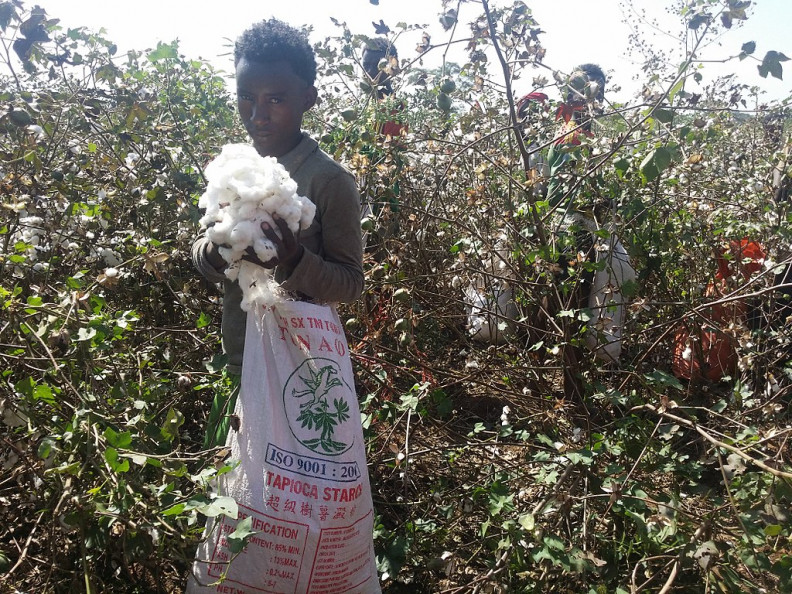By Betelhem Bedlu
The demand and the supply of cotton produced in the fiscal year are compatible and there is no shortage of cotton, said the Ethiopian Textile Industry Institute.
Institute Corporate Communication Director Banthihun Gessese told The Ethiopian Herald that though rumor is spread as if there was shortage, it is entirely groundless.
In this fiscal year, nearly 60,638 hectares of land were developed by 17,203 small scale farmers and 233 developers.
Consequently, over 40 thousand tones of cotton were harvested. Hence, there is no demand and supply gaps of cotton, the Director accentuated.
The country has over 2.4 million hectares of land that is suitable for cotton production. Benshangul, Gambela, Omo Valley area, Afar, Somali, Amhara and Tigray are among the convenient states that would make the nation one of the leading global cotton producing countries, he noted.
As to the Director, the development of cotton production is an engine for expansion and growth of textile and garment sector through supplying the raw materials the industry demands. Given the widely constructed industrial parks that are engaged in textile and garment, production of cotton plays a great deal for the sector.
According to the Director, the Institute exert utmost effort to ensure that the industries have access to the required amount of cotton produce. [
Banthihun mentioned that the Institute provides trainings for small scale farmers and cotton developers (producers) to produce cotton on large scale land. Accordingly, in the current fiscal year, more than 233 cotton developers have gone operational.
Moreover, the lands that were provided by the government for the purpose of cotton production were developed, he said.
Mentioning that cotton by its nature collects dust easily, the Director said, for the textile and garment sector to be competitive internationally in terms of quality and price, producing good quality cotton should be kept in mind. Thus, extra care must be taken in the production of cotton. "In this regard, our office provides trainings for experts, cotton developers and those engaged in the process to achieve best quality cotton products worldwide".
According to him, the the Institute will work with stakeholders to solve the identified major drawbacks that are bottleneck for the growth of cotton industry. It focuses on enhancing the local capacity to produce and export cotton products.
The nation owns areas that are rich in producing cotton yet it is not using its wealth well. Therefore, investors who took land to produce cotton should directly start the business and small scale farmers ought to use their lands effectively. Moreover, local investors should join the sector. For the product and production of quality cotton, various activities must be done, he stressed.
It was learnt that the 15 years strategic plan is prepared by international and domestic experts in a manner the nation utilizes its cotton resources efficiently.
The Director reminded that textile and garment sector has so far created jobs for about 71,250 citizens in permanent, temporary and contract basis.
As to the Director, a 'Movement Forum', which discusses on the 15 years sector's strategic plan and the major challenges that the sector has encountered, will be held after two weeks. Including Investment Commission, investors engaged in the textile and garment sector, cotton developers, financial institution, political leaders, experts and other concerned bodies are expected to take part in it.


